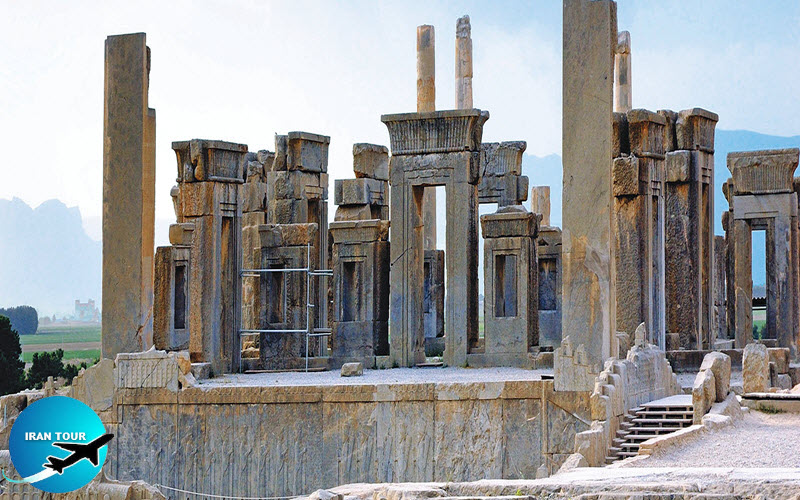Copyright 2020 - 2021 irantour.tours all right reserved
Designed by Behsazanhost
Treasury
Unquestionably the earliest structure in Persepolis, the Treasury was constructed in several stages. It was conceived by Darius, expanded later during his reign, and further enlarged under Xerxes. Originally, this huge building was enclosed by a high, mud-brick wall, and had an entrance on its west side. The entrance opened toward a line of small guardhouses, which were followed by three halls with four columns, and one room with two columns.
- Details
- Category: Museums of Shiraz
The Museum
The restored Museum building overlooks an open courtyard bordered by the Tripylon on the east, and the Treasury on the west. On the north, there were mud-brick barracks, possibly used as service areas. Built-in accordance with historical indications, the structure consists of a central hall supported by twelve columns, a north portico with eight columns, and several side vestibules and chambers. On both sides of the portico are what used to be small guardrooms, now occupied by the museum office and a souvenir shop.
- Details
- Category: Museums of Shiraz
The Harem or Seraglio
This palace is known today as the Harem ("the Inviolable Place”), but no structure in Persepolis has provoked more controversial opinions about its function. Scholars try to decide whether the building indeed housed the royal seraglio, or was an administrative structure, or even whether it provided additional storerooms for the Treasury. Some have suggested that the building accommodated the deputes of the subject nations, claiming that the number of the rooms in the building coincided with the number of the nations represented by the gift-bearers on the Apadana stairs.
- Details
- Category: Museums of Shiraz
Hadish Palace
The construction of Hadish (perhaps a common name for 'residence”) was begun by Darius and completed by Xerxes. Its plan is essentially an expanded version of the Tachara. Its devastation has caused some scholars to deduce that Alexander's arson started at this point, perhaps in retaliation for Xerxes's burning of the Parthenon in Athens. Standing on a platform hewn from the natural bedrock, the Hadish was reached by four staircases: one from the Tachara courtyard, another from the court south of Tripylon, and the remaining two from the west wing of the Harem.
- Details
- Category: Museums of Shiraz
Tachara Palace
One of the earliest structures on the platform, the Tachara (as the building is identified in one of its inscriptions), served as Darius I's private palace. The word means "winter house”, but there is no evidence showing whether the building was indeed occupied during the wintertime. However, its main facade, since it faces south, seems to lend credence to this idea. The building is also frequently called the Hall of Mirrors because its masonry was polished to a mirror-like, reflective finish.
- Details
- Category: Museums of Shiraz




